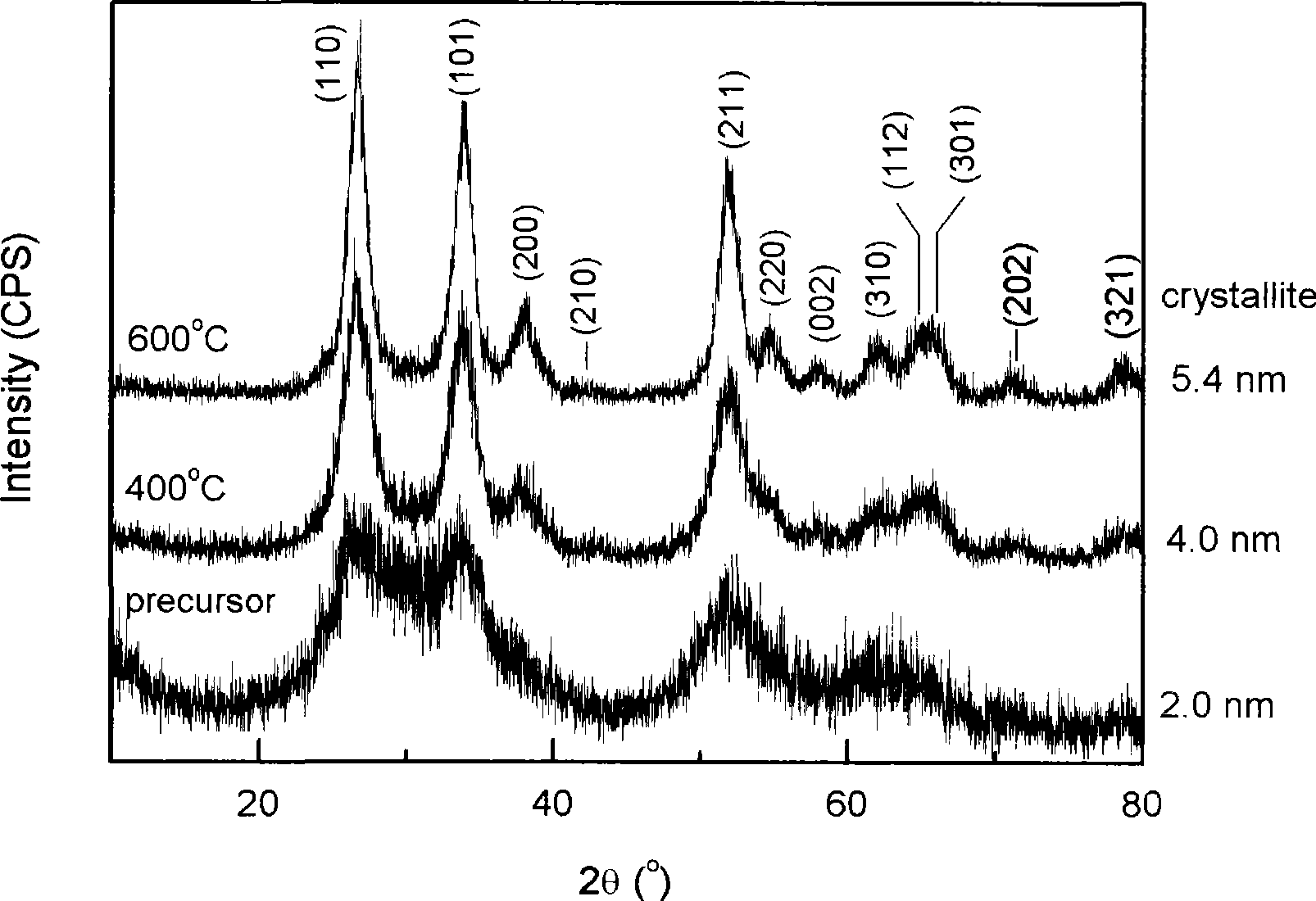Process for producing tin-stibium oxide ultra-fine nano-powder
An ultra-fine nanometer and oxide technology, which is applied in chemical instruments and methods, tin oxide, gallium/indium/thallium compounds, etc., can solve the problems of powder performance degradation, hard agglomeration, and affecting the performance of ATO powder, so as to eliminate Hard agglomeration, efficient doping, effect of preventing direct contact
- Summary
- Abstract
- Description
- Claims
- Application Information
AI Technical Summary
Problems solved by technology
Method used
Image
Examples
Embodiment 1
[0017] Take 21g SnCl 4 ·5H 2 O and 2.7 g SbCl 3 Dissolve in 300ml of ethylene glycol, add 9.6g of NaOH after complete dissolution, then heat treatment at 170°C for 2 hours, the solution changes from the original colorless transparent clear liquid to brown transparent liquid, after cooling to room temperature, in the process of mechanical stirring Slowly add 200ml of distilled water to completely precipitate the ATO precursor generated by the reaction. The light yellow precipitate was centrifuged, washed with water, and washed with ethanol, and then dried in an oven at 80°C for 10 hours to obtain a yellow, loose ATO precursor powder. The precursor powder was calcined in a tubular resistance furnace at 400°C and 600°C for 1h, respectively, to obtain dark blue ATO powder.
[0018] Use the powder X-ray diffractometer to measure the XRD pattern of the precursor and the calcined ATO powder at different temperatures, such as figure 1 shown. Analyzing the XRD diffraction spectra ...
Embodiment 2
[0021] Take 1g of ATO nanopowder and 100g of distilled water to prepare a suspension with a solid content of 1wt%, ultrasonically disperse in an ultrasonic cleaner with a power of 80W for 10 minutes, then take out 10ml and put it in a 10ml graduated cylinder, and place it at room temperature for a week without obvious settlement Or precipitate, which proves that this ATO ultrafine nanopowder has good dispersion stability.
PUM
| Property | Measurement | Unit |
|---|---|---|
| particle size | aaaaa | aaaaa |
Abstract
Description
Claims
Application Information
 Login to View More
Login to View More - R&D
- Intellectual Property
- Life Sciences
- Materials
- Tech Scout
- Unparalleled Data Quality
- Higher Quality Content
- 60% Fewer Hallucinations
Browse by: Latest US Patents, China's latest patents, Technical Efficacy Thesaurus, Application Domain, Technology Topic, Popular Technical Reports.
© 2025 PatSnap. All rights reserved.Legal|Privacy policy|Modern Slavery Act Transparency Statement|Sitemap|About US| Contact US: help@patsnap.com

